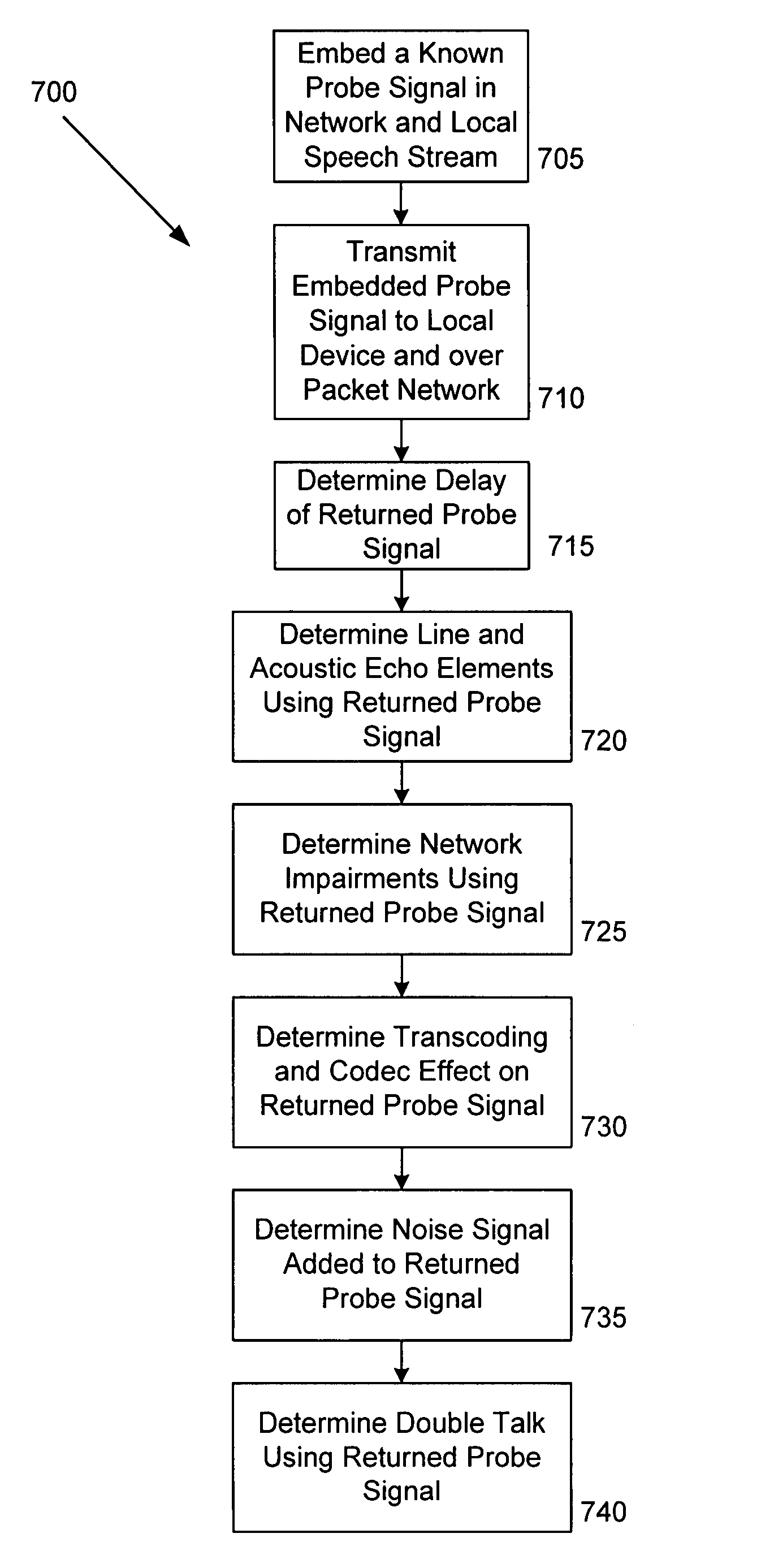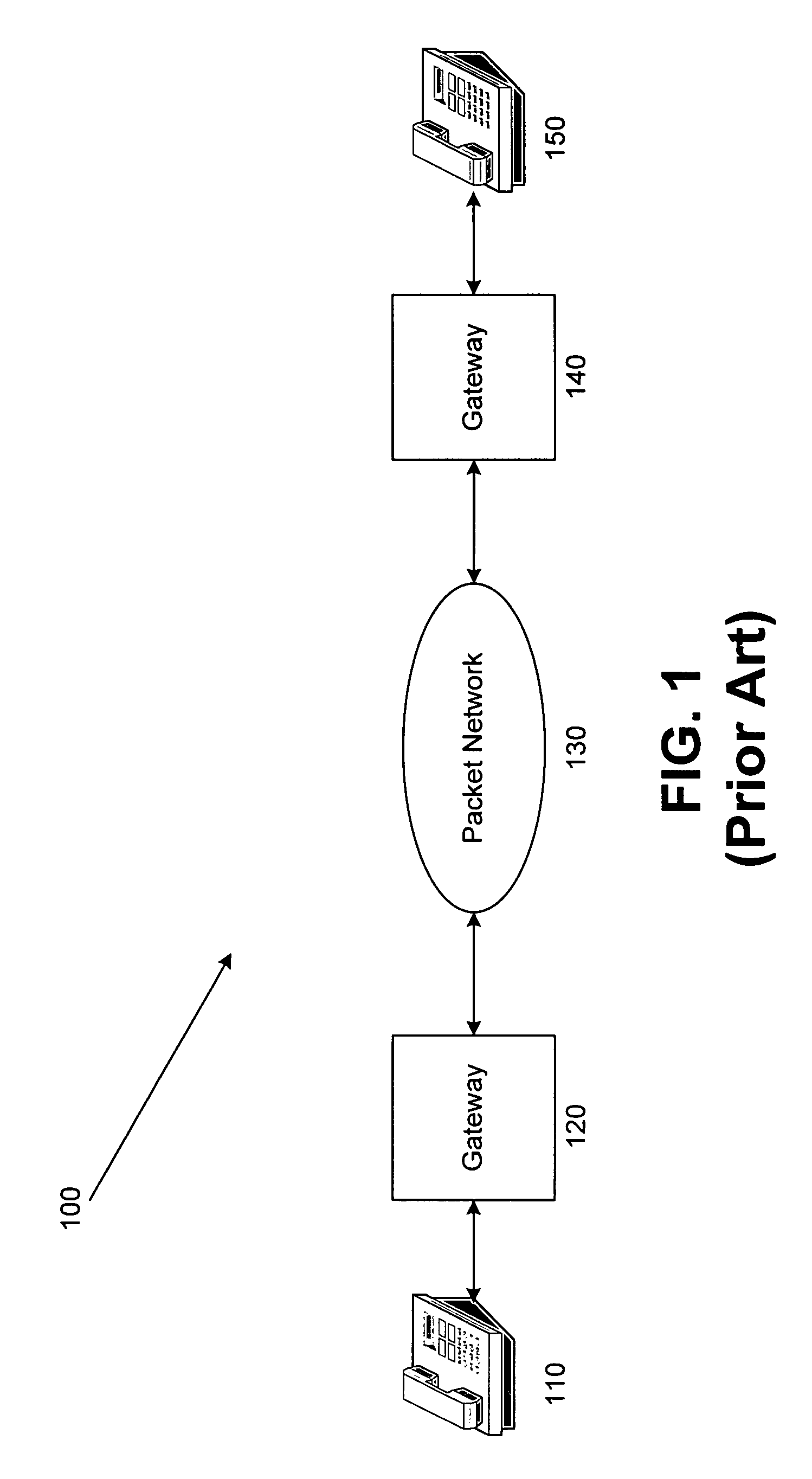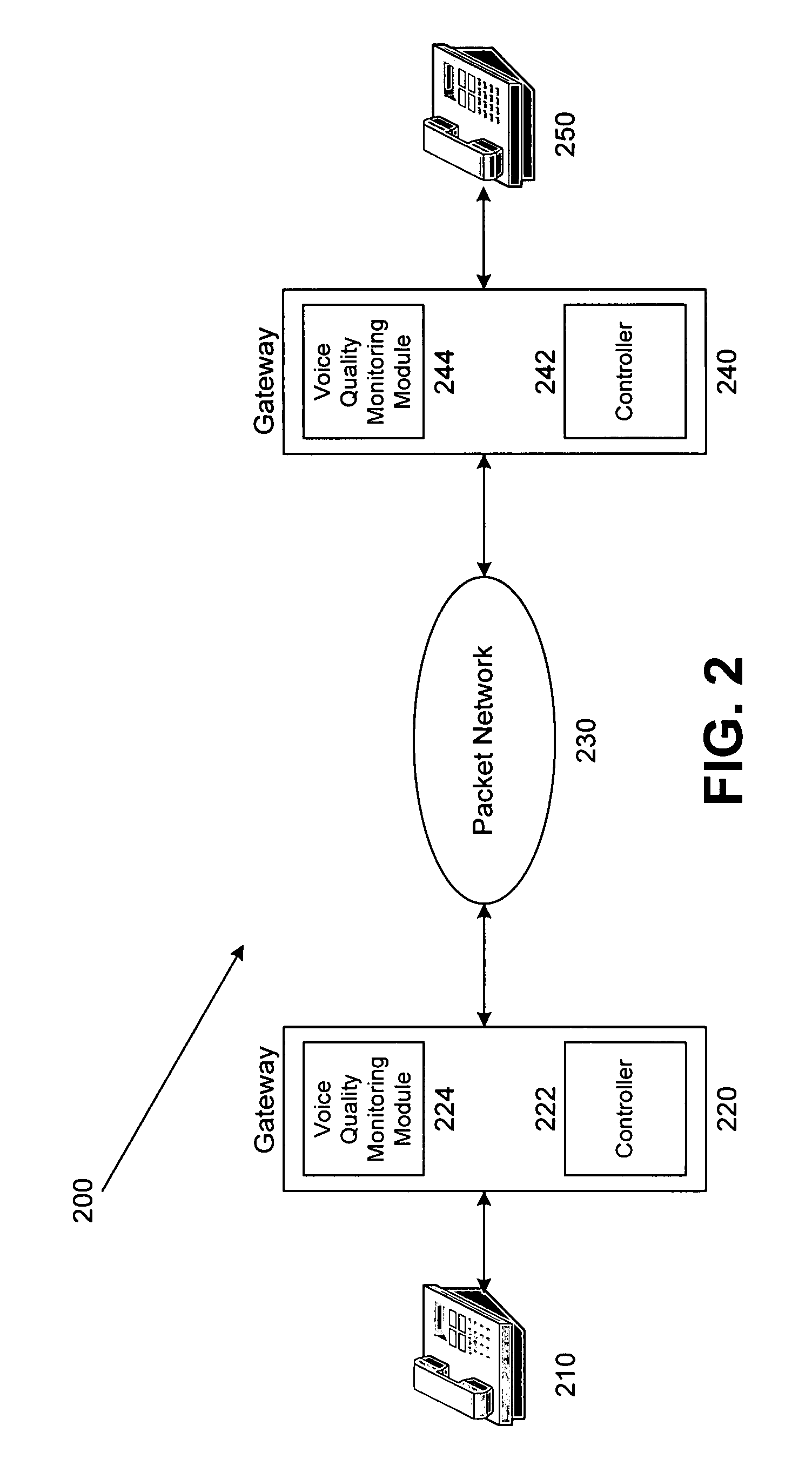Method and apparatus for quantifying, predicting and monitoring the conversational quality
a conversational quality and quantitative technology, applied in the field of assessing voice quality, can solve the problems of degrading the transmitted voice signal, affecting normal and natural conversational patterns, and modern telecommunication networks adding significant transmission delays
- Summary
- Abstract
- Description
- Claims
- Application Information
AI Technical Summary
Benefits of technology
Problems solved by technology
Method used
Image
Examples
example 1
Linear Combination, Power Low—Based on CII and TII Values
[0094]CQMON=∑nwn(fn)αn[0095]n Number of features used to derive CQMON, where n[0096]wn Feature-specific weight (includes normalizarion)[0097]αn Exponent associated with each feature[0098]fn Value for each feature
example 2
Weighted Log Combination
[0099]CQMON=∑nlogbn(wn(fn)αn)[0100]bn indicates that the log base need not be the same for all features
[0101]The feature set={CII, TII} or a subset of {DTR, FSDT, FSST, MS, MSR, RTS_LTN_SNR, NTLP, ANR, VAD, TrFO, TFO, PLC, NPJ, SCT, ERLE, RT, CII, TII}. The weight and exponents for each feature will be derived based on subjective conversation evaluation. The impact of language and contents can be considered during this evaluation phase.
example 3
Statistical Models of CQMON (Mapping Functions}
[0102]If we define the CQMON space as the set Q={q1, q2, . . . , qM}, where M can be finite or infinite. This set may include all possible values for CQMON. Similarly, we can define the feature space as the set Γcqmon={F1, F2, . . . , }, where each element consists of an n dimensional vector whose elements are a subset of {DTR, FSDT, FSST, MS, MSR, RTS_LTN_SNR, NTLP, ANR, VAD, TrFO, TFO, PLC, NPJ, SCT, ERLE, RT, CII, TII}. The feature set may include all possible values for feature vector. Further, designing a classifier for statistical models may include:[0103]Training phase: Define a training set consisting of a representative subset of feature space. These are the points in the feature space that one considers representative for a particular scenario (technology framework, network, devices, etc.)[0104]Labeling phase: Associate a value from the CQMON space to each element of the training set. (Experimentation and subjective evaluation...
PUM
 Login to View More
Login to View More Abstract
Description
Claims
Application Information
 Login to View More
Login to View More - R&D
- Intellectual Property
- Life Sciences
- Materials
- Tech Scout
- Unparalleled Data Quality
- Higher Quality Content
- 60% Fewer Hallucinations
Browse by: Latest US Patents, China's latest patents, Technical Efficacy Thesaurus, Application Domain, Technology Topic, Popular Technical Reports.
© 2025 PatSnap. All rights reserved.Legal|Privacy policy|Modern Slavery Act Transparency Statement|Sitemap|About US| Contact US: help@patsnap.com



